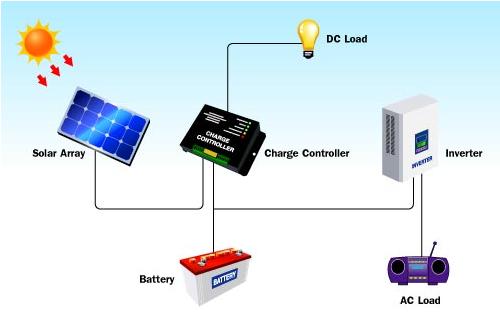The Main Components of a Solar Energy System

A solar energy system typically consists of several key components that work together to harness sunlight and convert it into usable electricity. The main components of a solar energy system include:
Mounting Structures: Mounting structures are used to securely install solar panels onto rooftops, ground-mounted racks, or other suitable locations. They provide support, orientation, and tilt angle adjustment for optimal solar panel performance.
Inverter: An inverter is an essential component of a solar energy system that converts the direct current (DC) electricity generated by solar panels into alternating current (AC) electricity suitable for use in homes, businesses, and the electric grid. Inverters also typically include monitoring and control functions to optimize system performance and ensure safety.
Racking and Mounting Hardware: Racking and mounting hardware are used to securely attach solar panels to mounting structures and roofs. They include brackets, rails, clamps, and fasteners designed to withstand wind, snow, and other environmental conditions.
Solar Charge Controller (for Off-Grid Systems): In off-grid solar energy systems, a solar charge controller regulates the charging and discharging of batteries connected to the system. It prevents overcharging and over-discharging of batteries, prolonging their lifespan and ensuring reliable energy storage.
Battery Bank (for Off-Grid Systems): In off-grid solar energy systems, a battery bank stores excess electricity generated by solar panels for use during periods when sunlight is not available, such as at night or during cloudy days. Batteries can store DC electricity for later use or convert it into AC electricity using an inverter.
Wiring and Electrical Components: Wiring and electrical components connect the various components of the solar energy system, including solar panels, inverters, charge controllers, batteries, and electrical loads. They transmit electricity safely and efficiently throughout the system, following electrical codes and standards.
Monitoring and Control Systems: Monitoring and control systems provide real-time data on the performance, production, and operation of the solar energy system. They may include meters, sensors, software, and communication devices that allow system owners to track energy production, monitor system health, and optimize performance.
Grid Connection Equipment (for Grid-Tied Systems): In grid-tied solar energy systems, grid connection equipment, such as grid-tie inverters and disconnect switches, enable the seamless integration of solar-generated electricity with the electric grid. They ensure safety, reliability, and compliance with utility regulations and standards.
These components work together to capture sunlight, convert it into electricity, store excess energy (in off-grid systems), and deliver clean, renewable power for a wide range of applications, including residential, commercial, and utility-scale electricity generation.
Thank you,